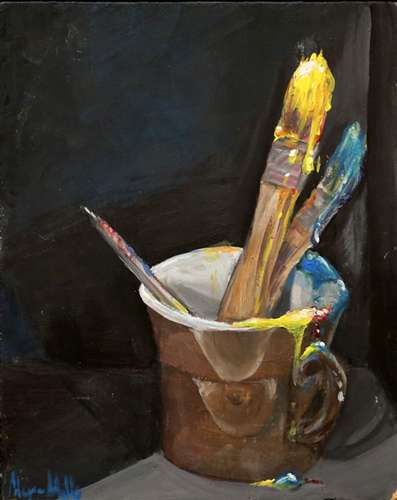
Fractured Atlas recently compiled a list of practical tips to help budding artists take meaningful immediate steps toward developing their artistic careers — one where you spend less time worrying about the hurdles that stand in your way and have more time to create your art. Check them out below!
(1) Practice your networking.
Find opportunities to meet new people, expand your professional network, and get recognized by influential players. This includes supporting other people’s art, joining professional associations, organizing a panel discussion, or volunteering at a local arts organization or project. If an Emerging Leader or arts-related Meetup group doesn’t exist in your town around a particular interest, start one. Find a theme and own it. Love bourbon and arts technology projects? Schedule informal gatherings at your favorite bourbon haunt and call the evenings Bourbon for Arts Infrastructure Geeks. Try hard to include people who primarily work outside of the cultural sector. The variety of viewpoints and opinions will make it a more dynamic and interesting group.
(2) Be a well-informed arts professional.
Expand your knowledge of what’s happening in your desired field by signing up for newsletters, reading industry trades, and searching for applicable studies. Today’s online marketplace of ideas offers a rich selection of food for thought to keep artists intellectually sated. Keep up with the daily industry news at ArtsJournal or other blogs, like Hyperallergic, find out what arts funders are thinking via Grantmakers in the Arts, curl up (virtually, of course) with some cozy arts research studies in the Createquity Arts Policy Library, or expand your horizons and follow a non-arts resource such as Stanford Social Innovation Review. And if all that’s too much, Fractured Atlas’s Culture Flash newsletter offers monthly Geek Alerts for the busy artist.
(3) Be easy to find. Don’t be shy!
When someone likes your work, make it easy for them to see more of it. There’s no excuse not to have your own artist website — tools like WordPress and Tumblr make it easy. Include a mailing list sign-up field and a donate button prominently on your site. Tell your fans about upcoming shows and projects with efficient e-newsletters from MailChimp. If you’re a performer, put your Twitter handle in all program bios.
(4) Track YOUR fans.
You can’t build a fan base or cultivate supporters if you don’t know who’s seeing your work. Selling tickets with a tool like Artful.ly is valuable because it allows you to collect every ticket buyer’s name — whether they purchase online or at the door. Even if you don’t charge for your shows, selling free tickets or taking RSVPs can help you get to know your fans. If you’re not self-presenting, ask the venue for a copy of the ticket buyers’ names. Aggregate your sales lists and you may discover repeat fans who could be potential donors during your next appeal.
(5) Account for your art-related expenses.
How much is your art costing you? There are many hidden expenses built into creating and presenting your work. Accounting for all of them — from supplies to marketing to rehearsal, studio, or exhibition space — helps you get a handle on the true cost of creating your work, which cannot only in form your pricing decisions ,but also makes it easier to create more accurate budgets and financial projections in the future. A spreadsheet program like Microsoft Excel offers an easy starting point for tracking expenses. If you’re looking for something more robust, you might try Quickbooks Online or Freshbooks.
(6) Broaden your fundraising horizons.
A plethora of options have cropped up to help artists raise money for their projects, including IndieGoGo, Kickstarter, and Rockethub. But you might want to consider fiscal sponsorship instead. Fiscal sponsorship allows artists to receive grants and tax-deductible contributions in ways that are normally available only to 501(c)(3) organizations. It has become an increasingly popular funding alternative for more and more artists — and fiscal sponsors like Fractured Atlas can even partner with popular crowd funding websites to expand your reach while still harnessing the benefits of nonprofit status.
(7) Catalogue and document your work.
Cataloging your work provides you with ready-to-go visuals for grant and residency applications, competitions, and crowd funding campaigns, as well as creating a record of your work in the event that you have to file an insurance claim. Start now by photographing everything you can and uploading it (with helpful tags and descriptions) to an online photo sharing site like Picasa and Flickr.
For the 21st-century artist, it’s simply not possible to just be someone who makes art (if that ever even was the case). Now more than ever before, success requires that we be entrepreneurs and small business owners who are skilled at keeping ourselves informed networking, fundraising, and marketing our work effectively. We hope that these tips will help you make that big career leap in 2013, even if you have to do it without a jet pack.
Note: This post originally appeared on Hyperallergic on February 1, 2013. Courtesy of Tim Cynova, the deputy director of Fractured Atlas, the United States’s largest arts service organization.
